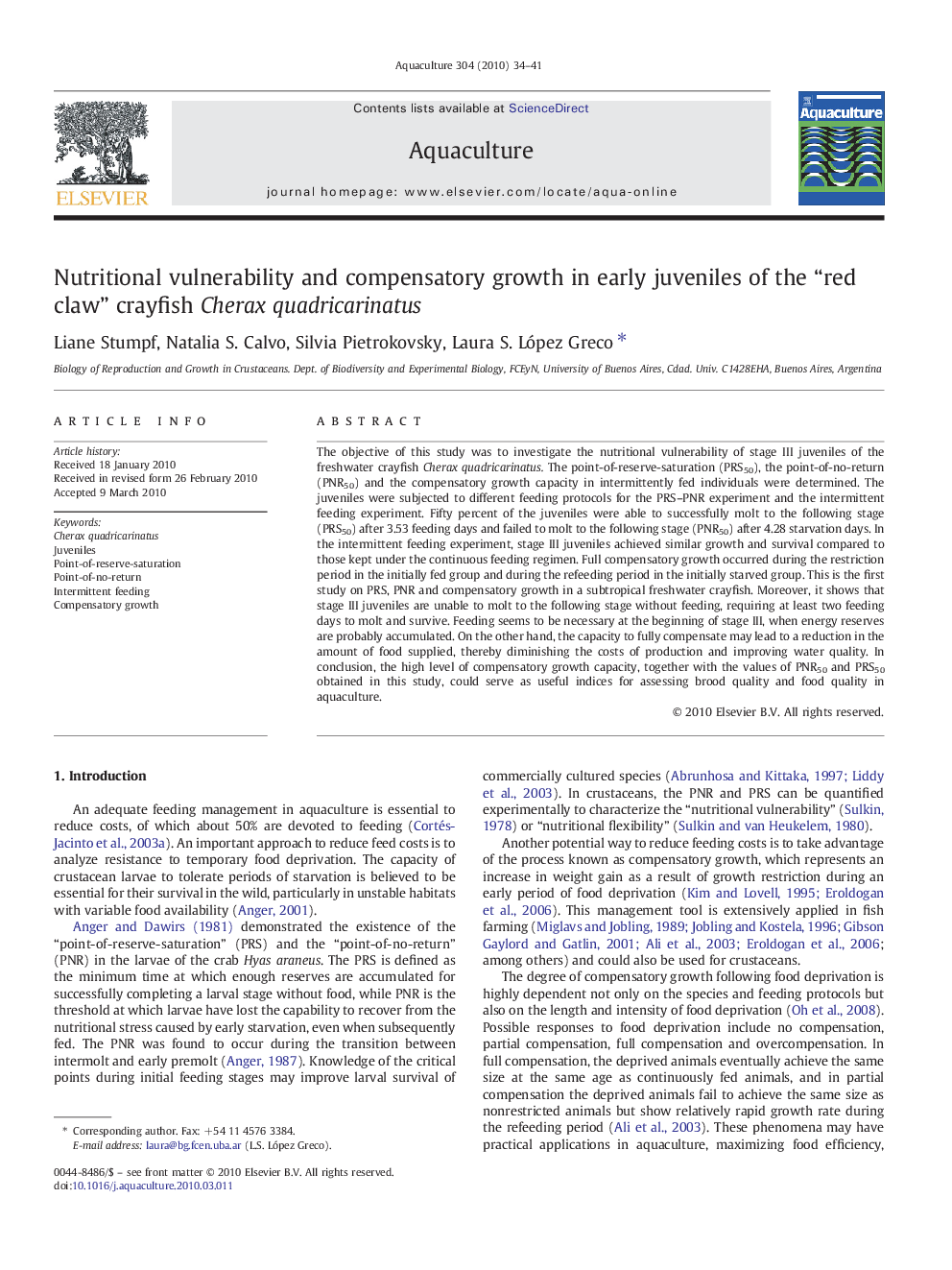| Article ID | Journal | Published Year | Pages | File Type |
|---|---|---|---|---|
| 2423643 | Aquaculture | 2010 | 8 Pages |
The objective of this study was to investigate the nutritional vulnerability of stage III juveniles of the freshwater crayfish Cherax quadricarinatus. The point-of-reserve-saturation (PRS50), the point-of-no-return (PNR50) and the compensatory growth capacity in intermittently fed individuals were determined. The juveniles were subjected to different feeding protocols for the PRS–PNR experiment and the intermittent feeding experiment. Fifty percent of the juveniles were able to successfully molt to the following stage (PRS50) after 3.53 feeding days and failed to molt to the following stage (PNR50) after 4.28 starvation days. In the intermittent feeding experiment, stage III juveniles achieved similar growth and survival compared to those kept under the continuous feeding regimen. Full compensatory growth occurred during the restriction period in the initially fed group and during the refeeding period in the initially starved group. This is the first study on PRS, PNR and compensatory growth in a subtropical freshwater crayfish. Moreover, it shows that stage III juveniles are unable to molt to the following stage without feeding, requiring at least two feeding days to molt and survive. Feeding seems to be necessary at the beginning of stage III, when energy reserves are probably accumulated. On the other hand, the capacity to fully compensate may lead to a reduction in the amount of food supplied, thereby diminishing the costs of production and improving water quality. In conclusion, the high level of compensatory growth capacity, together with the values of PNR50 and PRS50 obtained in this study, could serve as useful indices for assessing brood quality and food quality in aquaculture.
